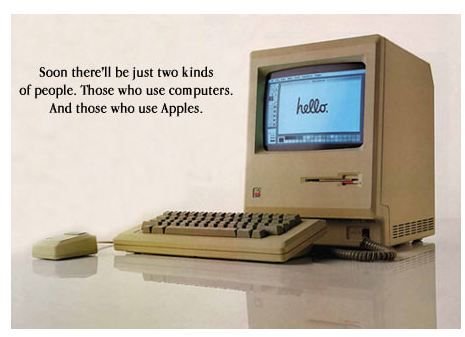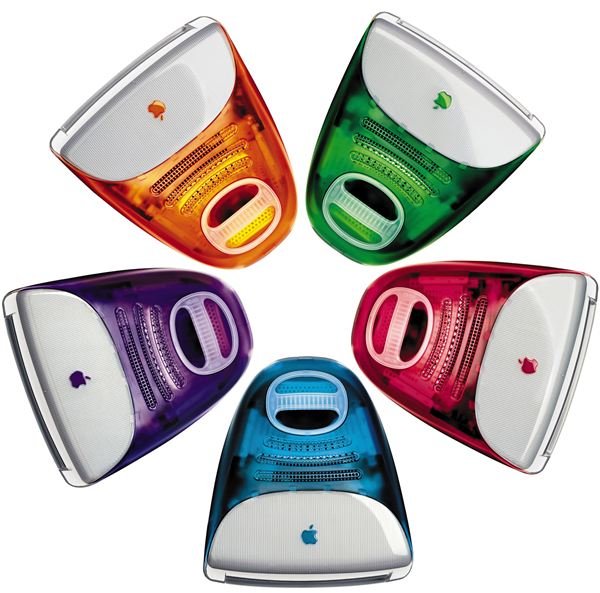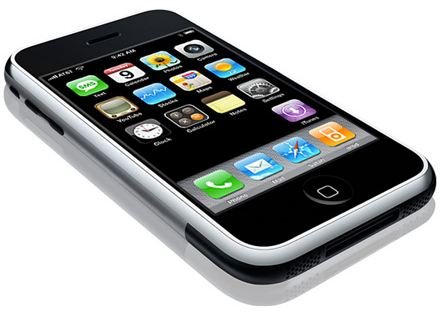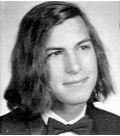A Quick Steve Jobs Biography: Learn Facts About Steve Jobs and Apple History
Who Is Steve Jobs?
Nowadays it’s hard to find anyone who has never heard of Steve Jobs. He’s made a name for himself and his company, Apple, Inc., and shared his trademark style with the world. His participation in the invention of the personal computer (PC), the Macintosh brand, and later the iPod, iPhone, and iPad have secured his spot in history.
Even with his popularity, there may be some gaps in your knowledge, so let’s take a closer look at CEO Steve Jobs.
Early Years
**
Steve Jobs was born on February 24, 1955 to Abdulfattah Jandali and Joanne Simpson. Shortly after birth, he was adopted as Steven Paul Jobs by Paul and Clara Jobs. Jobs’ biological parents later went on to wed and have his biological sister, Mona Simpson, but he was raised by his adoptive parents.
He attended junior high and high school in Cupertino, California, and worked in the summer for the Hewlett-Packard Company under Steve Wozniak. After high school Jobs briefly attended Reed College in Portland, Oregon, but dropped out after one semester. He did take a calligraphy class, though, to which he attributes the well-designed fonts and type-faces on his later computer systems.
Shortly after his stint in college, Jobs joined the Homebrew Computer Club (an early group of computer hobbyists) and worked for Atari as a technician. It was at this time that he became interested in Eastern cultures. The job at Atari allowed Jobs to save some money and shortly thereafter he traveled to India with a friend to seek enlightenment.
Jobs returned to Cupertino in 1975 as a Buddhist, with shaved head and traditional Indian garments. He tried out LSD and later stated that those around him at the time didn’t understand his countercultural thinking.
The Beginning of Apple Computer
That same year, Steve Wozniak, who had been collaborating with Jobs since their time at HP, began working on an idea for his own computer with a much more compact design. “Woz” and Jobs began working on this first prototype and called it the “Apple.” As they tried to sell the computer at local computer shops, they began designing the second version, the now famous “Apple II.”
Both Apple Computer founders realized that the Apple II was much more advanced than anything else out there. They sought venture capital funds from Mike Markkula, a former Intel executive, who believed in the potential of their little company. He gave them $250,000 in support and from there they launched the Apple II.
Over the next four years, Apple flourished. The Apple II crushed the competition and introduced the idea of personal computing all over the world. A large catalog of software was developed for the Apple platform. On the eve of 1981, Apple went public and Steve Jobs broke the $200 Million net worth mark - he was still only 25 at the time.
Learn more about how Apple matured on the next page!
Ups and Downs for Apple and Jobs
In the same year that Apple went public, International Business Machines (IBM), entered the personal computing market. The Apple III, the successor to the Apple II, did very poorly, so the company put all of their energy into the Lisa project. Lisa promised to be the first computing interface to use graphics, not just text. This was a huge technological breakthrough for Apple, but the Xerox PARC company first developed much of the concept. The controversy over who really invented the graphical user interface (GUI) was the first, but certainly not the last, spat with another company over “prior art.”
Unfortunately for Jobs, he was kicked off the team for Lisa because he was such a difficult manager. The rejection angered Jobs and inspired him to work on a new project: Macintosh. He specifically encouraged his team to work in competition with the other projects at Apple. Soon his project gained more and more importance as Lisa and other products failed to bear fruit in the marketplace.
The Macintosh

The year was 1984 and Apple needed to make a splash with their new product. Based on the idea, “a computer as easy to use as a toaster,” the Macintosh would be a fresh face for the Apple line and provide a more robust interface for less money.
Looking for a way to stand out from the rapidly expanding IBM, Apple made a commercial to contrast the year of the launch with the book by the same name. “1984” was a pop culture phenomena and set the pattern for Apple’s future design-centric and somewhat counter-cultural ethos. Ironically, many people today feel that Apple has become the booming voice on the screen. They have made their corporate culture as lock-in-step as any of their past competitors (complete with a glorified central figure). Even so, for most of its history, Apple was seen as an upstart in the tech industry.
The Wandering Warrior
Despite a momentous launch, the Mac (short for Macintosh) failed to sell well after its initial popularity. Steve’s company was less and less happy with his difficult attitude. Finally, Apple’s CEO John Sculley (Jobs was a co-founder but had never served as CEO, just chairman of the board) re-organized the company with Jobs in a merely supervisory position. This made Jobs both upset and sad, as Apple had become his entire life.
He left the company, sold most of his Apple stock, and set out on other ventures. Jobs purchased/founded Pixar, a small group of animators who wanted to use computers for their projects. He also founded a company called NeXT, with which he hoped to model on his own ideas of what Apple should have been.
Unfortunately, neither new company prospered under Jobs. Pixar failed to catch the eye of big production companies like Disney and the NeXT Cube, NeXT’s first computer, sold poorly. Eventually NeXT had to abandon hardware development and settled in as a specialized software company in a small market.
For the next few years, Jobs spent a lot of time at home with his young family (a son and his wife, whom he married in 1991).
On the next page, we’ll discuss Steve Jobs’ triumphant return to his beloved Apple.
The Prodigal Son Returns
After much frustration, Pixar was finally able to break away from small projects like TV commercials and debuted Toy Story in 1995. The movie was an enormous success and the company went public shortly after the opening weekend. Steve Jobs, who had an 80% stake in the company, saw his net worth grow to a staggering $1.5 Billion!
Meanwhile, Apple’s decade had been a poor one. Microsoft had launched Windows 95 and was quickly growing into a new OS empire. Windows had existed in earlier iterations, but 95 was the beginning of a new epoch for the software and that growth was only going to increase over the years. Apple needed a new strategy, fast.
In 1996, Apple’s new CEO, Gil Amelio, decided to purchase NeXT (primarily for the software and the engineers, many of whom had left Apple with Jobs in the first place) for $429 Million. Jobs served as an advisor for a short while, but soon he moved to take over the company and in 1997 was named interim CEO of Apple.
Jobs Reboots Apple or “Have You Tried Turning It Off and On Again?”

Upon gaining control of Apple, Steve Jobs began to hack away some of the superfluous projects and centered the company’s focus on just a few key areas. He supervised the launch of Apple’s well-known “Think Different” campaign.
Readers may remember the launch of the Power Mac 3G and the PowerBook, both successful products that helped Apple get back on its feet again. The real revolution came in the form of the iMac…
Up until this point, beige was king in the computing world. Some machines had been cased in metal, but most computer manufacturers ignored the aesthetics of their hardware. The iMac (launched in 1998) was a slightly lopsided sphere with bright, “fruity” colors and a round mouse. While the mouse has long been considered awkward, the overall aesthetic change not only pushed Apple back into the spotlight, but shook up many notions about design in the rest of the computing industry. Even today, Apple makes a habit of setting the design bar high and not looking back for other manufacturers to catch up.
Apple appreciated Jobs’ revolutionary direction and leadership and in 2000 they appointed him full-time CEO of the company.
OS X: The New Face of Apple
While the design elements of the new iMacs drew fans, much of the software running on those machines was the same as ever. The real leap forward for Apple was the release of Mac OS X (Operating System 10). Mac OS 9 had not been significantly different in appearance from older versions of Windows (like Win 3.1, which was in use before Win 95). OS X took advantage of the NeXT acquisition and poured in an enormous number of new features and interfaces. To many in the tech community (this writer included) it led to the realization that Apple might once again be a serious competitor to the other platforms.
The OS X suite that accompanied the new operating system included the now familiar “iApps.” These applications (all prefixed with “i”) provided for the vast majority of everyday computing needs. iMovie not only played but allowed for the editing of movies. iPhoto let users organize digital photos (an increasingly popular photo medium). In some foreshadowing of what was to come, Apple also released iTunes, a simple digital music jukebox application.
This new OS and suite of apps lead to a new movement hoping to switch users over from the Windows platform to the Mac. While this rivalry had existed for quite some time, the drums of marketshare war beat a little louder than before.
On the next page, see where Apple has gone in the post-OS X era!
Out of Nowhere - The iPod
Steve Jobs wisely realized that creating a computer for the “digital lifestyle” had to go beyond traditional form factors. In 2001, he gave one of his now infamous keynotes (aka, “Stevenotes”) where he unveiled the iPod. Its large storage capacity and fast data transfer speeds (supported by Firewire originally) overcame some of the problems faced by other digital music players. The most important feature for Apple was the integration with iTunes - a move that firmly connected the Apple architecture to the mobile device.
With a launch date just in time for the holiday season, Apple’s first generation iPod did extremely well. They continued to produce a new generation of iPod about once a year (always in time for the winter buying season) and in 2003 they introduced a Windows version of iTunes. This move signaled the popularity of the device on its own, not just as an accessory to the Mac.
The company continued to re-invent their product, adding features like an electrostatic click wheel and offering a smaller version (the mini, then the nano). Apple’s characteristic earbuds could be sighted on street corners and buses anywhere in the country!
iPod Begot iPhone

You’ll notice the article has shifted away from Steve Jobs as a person and toward Steve Jobs, “head of Apple.” This is because after his major revolutions to the company (OS X and the iPod), the PR surrounding Apple began to skew more and more toward a “cult of personality” surrounding Jobs. While earlier products were (in the consumer’s mind) the progeny of a team of dedicated Mac-heads, more recent products conjure up images of Steve Jobs’ dreams made manifest. His strong message control, self-congradulatory keynote events, and constant grandstanding for the company have centered the public’s focus squarely on his shoulders.
No product goes quite as far as the iPhone, though. A long-rumored product, the iPhone merged mobile phone calling and connectivity with the media-playing capabilities of the iPhone. Its “multi-touch” interface changed all media players and smartphones to come after it. All in one, it was an epiphany of both aesthetic form and technological synergy. Of all the recent products, the iPhone is the device most closely associated with Steve Jobs. His name is even on the patent!
The iPhone could probably have its own article (and in truth its story is still unfolding), but in many ways it is important because it shows off Jobs’ modern technological philosophies. First of all, Jobs is very “button-averse.” Anytime he can eliminate a button he does. The multi-touch screen went about as far as any technology could to accomplish that goal.
In a larger way, the iPhone is the ultimate device to keep you connected to your computer even while you’re away. It syncs to a Mac (or a Windows PC) just like an iPod, but can access the web on its own as well.
How Much is Steve Jobs Worth?
So what now? Well in recent years, Steve Jobs has taken a few steps back from Apple. His health (though somewhat of a mystery) does seem to be interfering with his work, so he’s clearly preparing for some form of retirement. His keynotes are populated by not only himself, but the vice presidents of relevant divisions. Most take this as a signal of a mid- to near-term departure for the Apple overlord.
He’s done pretty well for himself, though! According to Forbes, Steve Jobs is worth $6.1 Billion (as of their latest calculation, August 2010). This ranks Steve Jobs as the 136th richest person in the world!
Clearly, Steve Jobs is a dynamic character who not only has a place in computing history, but continues to effect the world in remarkable and creative ways. Though all geeks rail against his “unique” personality from time to time, you’ll find few who do not give him the respect he deserves.
